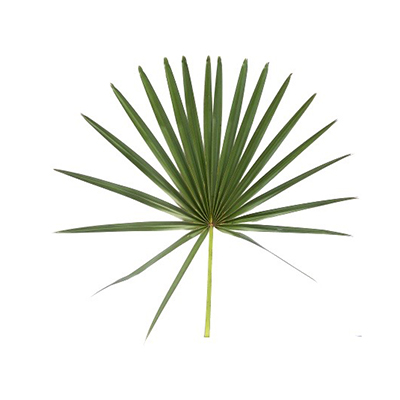Doub Palm
Borassus flabellifer L.
Arecaceae
Location in our garden
Principal



Synonym
Borassus flabelliformis L.
Borassus sundaicus Becc.
Borassus tunicatus Lour.
Habitus
Palm. A robust palm, dioecious, single-stemmed evergreen and growing up to 30 m.
Part Used
Leaves
Bark
Flowers
Fruit
Roots
Stem
Growing Requirements
Full Sunshine
Drought Resistant
Habitat
Terrestrial
Overview
Doub palm is distributed from India through South-East Asia to New Guinea and North Australia. It is particularly abundant in India, Burma (Myanmar), and Cambodia, where it is frequently planted. Its distribution probably followed Indian trade routes in prehistoric times. This plant is also used as a natural shelter for birds, bats, and wild animals.
Vernacular Names
Lontar, Siwalan (Indonesian), Palmira (Brazil), Faecherpalme (German), Palmira (Tagalog-Philippines), Lontar (Malaysia), Tan bin (Myanmar), Not (Thailand), Loost (Vietnamese).
Agroecology
Doub palm is an adaptable plant and can be found up to about 800 m altitude. This plant will grow and produce well with rainfall as high as 5,000 mm per year, the temperatures never drop below 10°C, with an optimum annual average temperature around 30°C, but it withstands extreme temperatures as high as 45°C and as low as 0°C. These plants can grow well in full sun even when they are young. Prefers sandy soil, but plants can thrive in a variety of conditions.
Morphology
- Trunks - large and straight, ringed with leaf scars.
- Stems - massive, straight, up to 1 m in diameter at the base, conical up to about 4 m high, thereafter cylindrical and 40-50 cm in diameter, occasionally branched, covered by leaf bases when young, rough, and ringed with leaf scars when older
- Leaves - arranged spirally, leathery, induplicate, strongly costapalmate.
- Inflorescence - interfoliar, peduncled, shorter than the leaves, the male and female dissimilar. Male: massive, up to 2 m long, consisting of about 8 partial inflorescences of three rachillae each. Female: unbranched or with a single first order branch, flowers larger than male ones, 3-merous, tricarpellate.
- Fruits - a globose to subglobose drupe, 15-20 cm in diameter, 1.5-2.5 kg in weight, dark purple to black; petals persistent, brittle, not imbricate.
- Seeds - shallowly to deeply bilobed, pointed; endosperm sweet and gelatinous when immature, hard and ivory-like with a central cavity when mature.
Cultivation
Propagated by seeds - pre-soak for 24 hours in warm water and sow in containers or in situ.
Chemical Constituents
Flavonoids, alkaloids, saponins, tannins, carotenoids, β carotene, steroids, triterpenoid, propanediol acetate, benzenediol acetate, propanediamine.
Traditional Medicinal Uses
- The young plant is used to relieve biliousness, dysentery, and gonorrhea.
- Young roots are anthelmintic and diuretic.
- Has a potential immuno-suppressive action.
- Useful as an anti-inflammatory and for dropsy and gastric conditions.
- Studies have suggested analgesic, antibacterial, antioxidant, cytotoxic, anticancer properties.
- The ash of flowers is taken to relieve heartburn, enlarged spleen, and liver.
- The bark decoction, with salt, is used as a mouth wash.
- The pulp of the mature fruit relieves dermatitis.
- Dried roots can also be smoked to heal nasal complaints.
- Sap from the flower stalk is prized as a tonic, diuretic, stimulant, laxative, and anti phlegmatic and amoebicide.
Part Used
Reference Sources
- Chinnaswamy, P.A., Nima, K.V.B. & Selvam, K.C. (2009). Diuretic effect of the ethanolic and aqueous extract of seedling of Borassus flabellifer. Asian Jr. of Microbiol. Biotech. Env. Sc. 11(2):313-317.
- Gummadi, V.P., Battu G.R., Diyya, K.M.S. & Manda, K. (2016). A review of Palmyra Palm (Borassus flabellifer). International Journal of Current Pharmaceutical Research 8(2):17-20.
- Krishnaveni, T.R.S., Arunachalam, R., Chandrakumar, M., Parthasarathi, G. & Nisha, R. (2020). Potential review on Palmyra (Borassus flabellifer L.). Advances in Research 21(9):29-40.
- Saravanan, C., Priya, B., Asir Bradley, S. & Sundaram, U. (2012). Preliminary phytochemical screening of antibacterial activity of Palmyra Palm (Borassus flabellifer) root extract. International Journal of Pharmaceutical Sciences and Research 3(11): 4489-4491.
- Subashini, S., Rameshkannan, V. & Mani, P. (2015). Phytochemical and GC-MS analysis of bioactive compounds from Borassus flabellifer Linn root. European Journal of Molecular Biology and Biochemistry 2(3):148-152.




